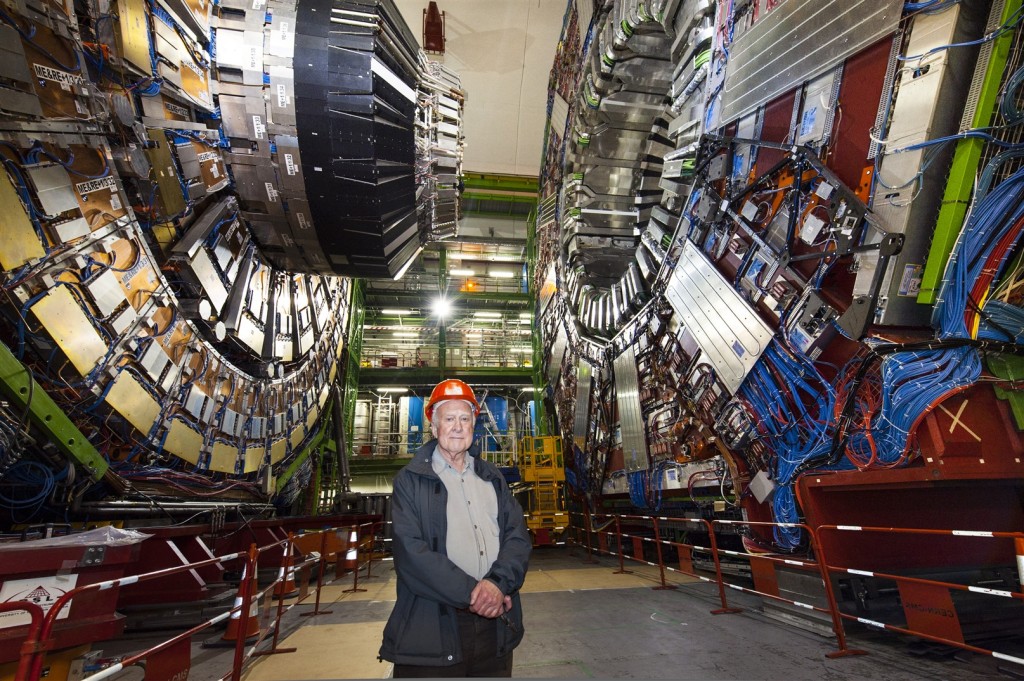
A YEC scientist questioned Jason Lisle regarding his choice of the Anisotropic Synchrony Convention (ASC) in his cosmological model. That scientist believes that the Einstein Synchrony Convention (ESC) is the more natural choice and correct choice for the cosmology of the Universe as well as the one that the biblical language uses. Dr Jason Lisle responds with the following.
For the sake of time, this will have to be my last clarification on the matter. But I’ll try to answer your most relevant questions and comments. Regarding your comment that “ASC says nothing about reality,” that would require some clarification. Both ESC and ASC are coordinate systems that describe the same underlying reality. (Perhaps that’s what you meant.) But the fact that either can be applied with equal legitimacy, each making correct predictions in regard to any relativistic experiment or observation, says something quite profound about reality. Namely, the universe is non-Newtonian, and our measurements of time and space are necessarily observer-dependent. As a result, one-way velocities are inherently conventional to some extent. This necessarily includes the one-way speed of light.
The relativistic nature of spacetime can be “pushed” conceptually from one place to another, but it cannot be eliminated. Your comment that using ASC “the imagined speed of light depends on its direction where the observer is” illustrates this – because the same type of thing is true of velocities under ESC. Under ESC observer A sees light moving at speed c relative to himself, and observer B sees light moving at speed c relative to herself, even if A and B are moving relative to each other! Moreover, if observer A accelerates, he will perceive that the light adjusts so that it is still speed c faster than himself. Under either convention the light seems to “know” what the observer is doing and instantly adjusts itself relative to any given observer. Like it or not, that’s the way the universe is.
The view that you are advocating as “reality” is very similar to the pre-Einstein view of a material luminiferous ether, which provides an absolute velocity reference frame, albeit a potentially undetectable one. Now, that is not the view held by most modern physicists who would argue that no inertial velocity frame is objectively preferred over any other in terms of the laws of physics (the relativity principle). Moreover, your view denies the conventionality thesis that Einstein affirmed. Of course you will say that Einstein and modern physicists are wrong; and that will have to be debated on the basis of the observations and internal consistency.
I mention this simply to point out that your comment that “ASC obscures what [you] think is reality” really doesn’t have any bearing on the correctness of using ASC. What you think is reality, is not what most physicists (myself included) think is reality. That doesn’t automatically make your view wrong of course. But your claims are not consistent with our modern view of physics, whereas ASC is concordant with our modern understanding of physics. So naturally, ASC will clash with your views. (Actually, so does ESC – because it defines the one-way speed of light to be actually constant with respect to any inertial observer, whereas your model would claim that it only appears that way). It’s okay that we have competing models. That’s how science advances.
The comment that “In the ASC one has to bend one’s brain like a pretzel to understand and explain simple phenomena like the aberration of light” I suspect you would not have written if you were familiar with any of the technical literature on the conventionality thesis (e.g. Winnie, J.A. 1970, Salmon, W.C. 1977, Sarkar & Stachel, 1999) because aberration of starlight happens quite naturally and necessarily under ASC, or any other valid synchrony convention. There’s nothing perplexing about it at all. I’m sorry that my simple geometric proof was not understandable to you. But the fact that aberration must occur in ASC follows necessarily from the epsilon-Lorentz transformations, as derived by John Winnie (1970). See Aberration of starlight and the one-way speed of light for more on this.
Moreover, similar effects happen under ESC. You might be bothered that matter shears when accelerated under ASC. But under ESC, when an observer is accelerated, the entire universe shears in the direction of motion (Lorentz beaming/aberration)! Students unfamiliar with relativity may feel that “one has to bend one’s brain like a pretzel to understand and explain” length contraction, time-dilation, or Lorentz beaming. But the effects are real and provable, despite any intuition to the contrary. Likewise, one who has spent very little time contemplating the effects of non-isotropic light propagation will likely think that some of its effects are counterintuitive. But this is scientifically and logically irrelevant. Intuition is based largely on experience.
Furthermore, it doesn’t make sense to argue against a coordinate system. For example, we normally use spherical coordinates when deriving the Schwarzschild metric. It would be a pain to derive this metric in rectangular coordinates. But it could be done, and would be no less legitimate. The inconvenience of using rectangular coordinates in that situation doesn’t make rectangular coordinates wrong. Nor does it preclude situations where the rectangular coordinates might be more natural than spherical. And it’s easy enough to convert from one system to the other, just as we can convert from ASC to ESC.
In regard to your comment that “the ESC seems to be concordant with our thinking, and offers a very simple way to understand aberration and most other phenomena,” this is not generally true. There are some situations where ESC is the more natural system to use, and other situations where ASC is the more natural to use, just like spherical vs. rectangular coordinates. For example, the explanation for superluminal jets is much, much easier under ASC, than under ESC. Generally, ESC is more natural when doing mathematical calculations, because the symmetry makes the math easier (just as I always use spherical coordinates when dealing with the Schwarzschild metric). On the other hand, all observational astronomers use ASC exclusively when taking their data; I’ve done such observations. As another example, I’ve never heard anyone refer to supernova 1987a as “supernova 166014 BC.”
ESC may be concordant with your thinking; but that’s only because you have been trained to think that way (I have too). However, it is most decidedly not the natural way, or the way that people would think about observations apart from modern training. For example, suppose you are watching a deer drinking from a stream. Do you think to yourself, “I’m seeing this deer right now, but I wonder how many millions of years ago this event actually happened? That deer is probably long dead today, and the stream probably dried up long before I was born, even though I see them happening right now.” No one would think that way naturally. Only modern man has been trained to think that way when it comes to celestial events. But, apart from modern education, our natural inclination is to believe that what we see happening right now, is, in fact, happening right now. History records that until the time of Galileo, nearly everyone believed that light-travel was instantaneous, and thus that they were seeing the universe in real-time. (Contrary to his contemporaries, Galileo suspected that light might have a finite, albeit very fast, speed). That is, everyone implicitly used ASC, though they would not have realized all the implications.
There can be no doubt that mankind used ASC nearly exclusively for the first 5600 years of history. Our natural inclination is to think that what we see happening now is in fact happening now – that’s ASC. Given the concordance of the ASC with our natural way of thinking, I must agree with your closing comments, but for ASC rather than ESC. Namely, this suggests that God uses the ASC when He specifies distant events in the Bible. (Why would God use a coordinate system that would not be possible for humans to use until AD 1676 – a system that wasn’t formally used until about AD 1900?) After all, His object is to present things as straightforwardly (to our natural way of thinking [ASC – what we see happening now is happening now]) as possible (Proverbs 8:7-9; Numbers 12:6-8). Numbers 12:8 “…clearly and not in riddles…” God is not trying to deceive us by saying things that have an obscure meaning only understandable to people who supposedly know the inside story. E.g. ESC is the “inside story” used only by modern man and mainly only in theoretical calculations; that is, the obscure idea that what we see happening now “really” happened millions of years ago, and what is “really” happening now will not be observed until millions of years in the future.
And to drill home the absurdity of the Bible using the ESC convention, I’d like to examine the verse you cited – 2 Peter 3:7. Since virtually everyone before Galileo considered the universal “now” to be “what we currently see,” there can be little doubt that people would have interpreted the verse to mean just that – the present heavens as we see them now in real time (by the ASC). Now if God really meant “the present” according to the ESC (in which the present universe is a totally unobservable mathematical construct) then we must ask “relative to whom” because ESC is velocity-dependent, and observers on earth have very different velocities due to earth’s rotation. The Lorentz transformations show that the present heavens will be different for different observers depending on where they are on earth – a difference of tens of thousands of years! This principle is called the “relativity of simultaneity.”
For example, consider a distant galaxy, 13 billion light years away, and roughly in earth’s rotational plane. At some time of the day, relative to Earth’s center, an observer on earth’s equator will be moving toward this galaxy, while his friend on the opposite side of earth is moving away, simply due to earth’s rotation. Because these two people are in different velocity frames, under ESC, their definition of “now” for this galaxy will differ by 40,000 years! That is, what one observer considers the “present” state of this galaxy by ESC will be the state 40,000 years ago to the other observer. Conversely, what the other observer considers to be the “present” for this galaxy under ESC will be what his friend on the opposite side considers to be 40,000 years in the future. So which one is the actual “present heavens?”
If the Bible uses ESC, then what people consider to be the “present heavens” will differ by more than 80,000 years (in both directions) depending on where they live! Because you and I live at different locations, my “present heavens” cannot be the same as your “present heavens” – under ESC. On the other hand, if the Bible uses ASC, then all observers agree on what the “present heavens” mean to within one-twentieth of a second. For a more in-depth treatment of this principle, see my ARJ paper (2010).
By the way, I didn’t invent ASC. The conventionality thesis has been pretty well established in the technical literature. And even secular scientists have pointed out in peer-reviewed literature the advantages of using the past light cone as the definition of simultaneity, e.g. ASC (Sarkar & Stachel, 1999). I just gave it a name and pointed out that it happens to solve the distant starlight problem using known physics. I don’t mind at all that you are proposing new physics; science wouldn’t advance if people didn’t try new ideas – so that’s great. But since there is a known and well-established synchrony convention that completely eliminates the distant starlight problem based on conventional physics, and since this appears to be the very convention the Bible uses, why not point this out?
Since the Bible always lists celestial events as concurrent with their light striking Earth (e.g. Genesis 1:14-15 – God made the lights to give light upon the earth – and it was so) this is a dead give-away that the Bible uses the ASC. I can’t think of any reason to force ESC – a modern invention – into the Scriptures, and then complain that this seems to cause a starlight problem. Under ASC, our ability to see distant events within the biblical timescale happens quite naturally. In any case, if the modern understanding of relativity is basically correct, and if the Bible uses the ASC (so that its words could be understood at all times and not just by modern physicists) then there is no distant starlight problem.
I hope this helps.
References
- Winnie, J. A. 1970a. Special Relativity without one-way velocity assumptions: Part I. Philosophy of Science 37:81–99.
- Winnie, J. A. 1970b. Special Relativity without one-way velocity assumptions: Part II. Philosophy of Science 37:223–238.
- Salmon, W. C. 1977. The philosophical significance of the one-way speed of light. Noûs 11:253–292.
- Sarkar, S, and J. Stachel. 1999. Did Malament prove the non-conventionality of simultaneity in the Special Theory of Relativity? Philosophy of Science 66:208–220.
Additional Reading
- R. Newton, Distant starlight and Genesis: conventions of time measurement, Journal of Creation 15, no. 1: 80-85, 2001; J.P. Lisle, Anisotropic Synchrony Convention—A Solution to the Distant Starlight Problem, Answers Research Journal 2:191–207, 2010.
- J.P. Lisle, Aberration of starlight and the one-way speed of light
- J.G. Hartnett, Synopsis: A biblical creationist cosmogony
- J.G. Hartnett, Expansion of space – a dark science
- J.G. Hartnett, A biblical creationist cosmogony
- J.G. Hartnett, Speculation on redshift in a created universe
- J.G. Hartnett, Supernova remnants and the age of the Universe
Recommended Reading
- Book: Merchants of Death: Global Oligarchs and Their War On Humanity
- Book: Apocalypse Now: On the Revelation of Jesus Christ
Follow me
- Telegram.org: @GideonHartnett
- Facebook: Gideon Hartnett
- X (Twitter): @gideon195203

To be notified by email put your email address in the box at the bottom of your screen. You’ll get an email each time we publish a new article.

Click this image to make a secure Donation (Stripe) !







3 responses to “Jason Lisle Defends His ASC Model”
[…] Source: Jason Lisle defends his ASC model […]
LikeLike
In quantum physics they are battling to understand how paired particles separated by space instantaneously achieve opposite spins when the one is forced to “choose” by being observed. I was wondering if this may be a potential proof that the one-way speed of light is infinite (or at least more than c) as per the ASC?
LikeLike
No. It is a tempting idea. It is conventional thus we define it. Therefore I don’t believe it can be related to the idea you describe in quantum entangled systems.
LikeLike